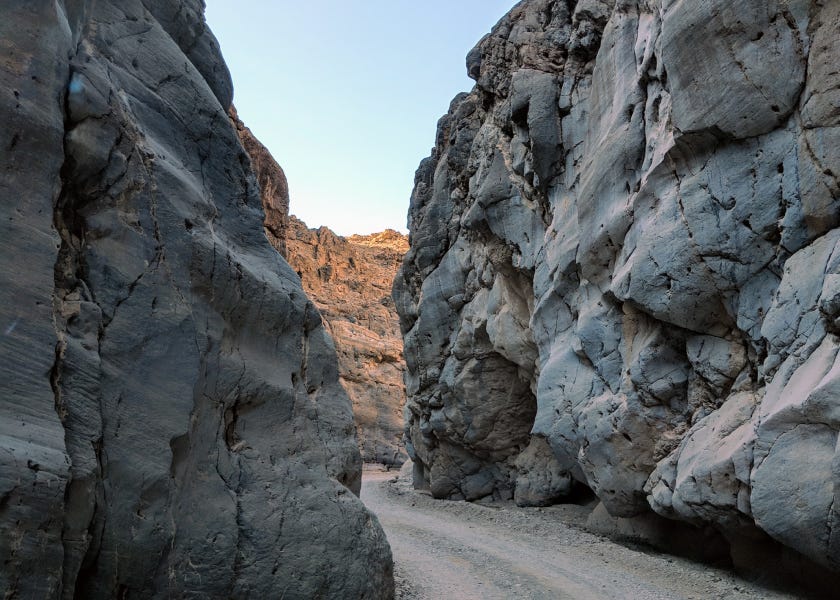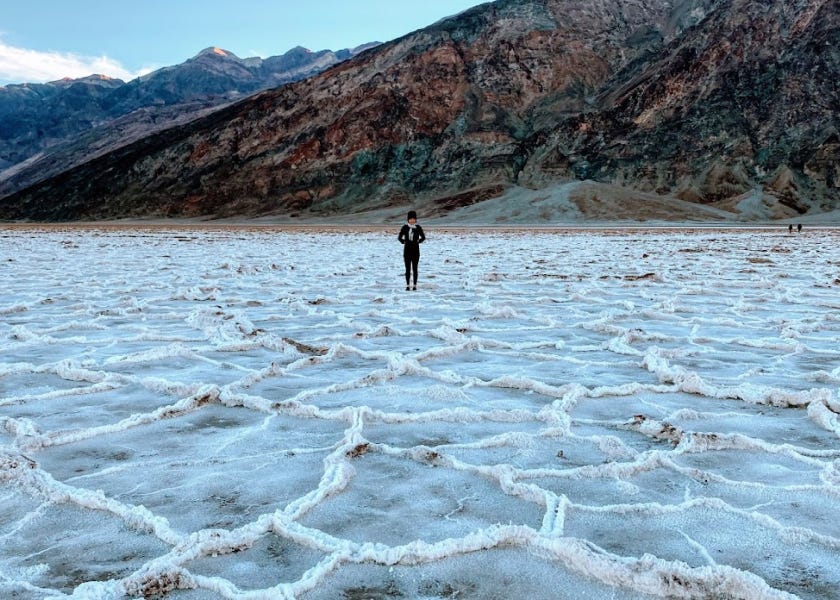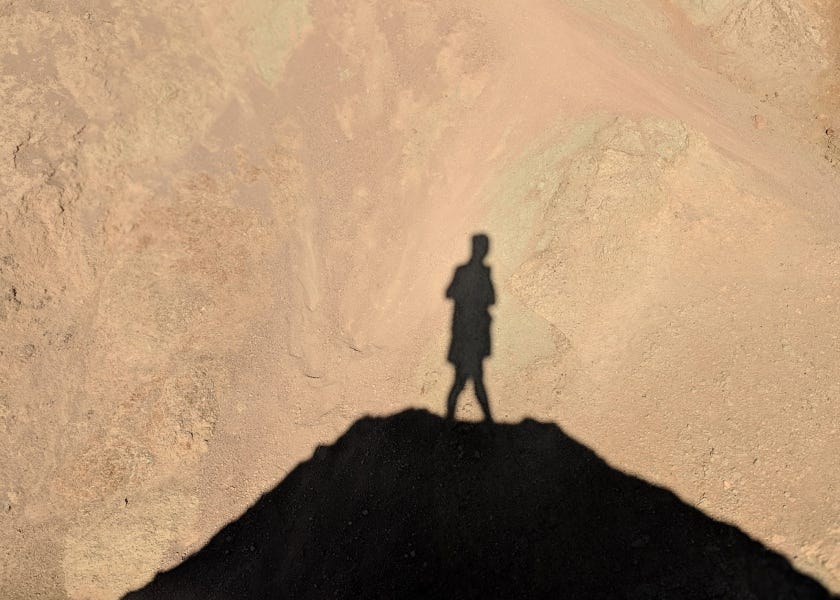Why Change is Hard—and How to Better Manage Transition
Here we are, on the cusp of a new year in the Gregorian calendar. Come January, some people eagerly attempt resolutions, while others avoid them altogether. The challenge with resolutions is that they often fail to stick. Why? They start with a solution rather than addressing the underlying problem, and often overlook the behavioral shifts needed to build lasting habits.
In short, resolutions focus on changes, as opposed to thoughtful transitions.
In this post, I invite you to explore transitions in your life—whether it’s one you’re currently navigating, one from the past that still needs processing, or one you’re preparing for in the year ahead. Together, we’ll unpack how transition differs from change, and the phases that support a meaningful, healthy transition.
Change vs Transition
Change is not easy. Whether a life shift, a professional shake-up, or an unexpected global event, it often feels overwhelming. And in today’s world, where stability and predictability are in short supply, major changes—both anticipated and not—are hitting us more frequently than ever.
Over the past few years, I’ve faced a number of considerable changes: navigating a fertility journey, becoming a solo mom, losing a leadership role, earning multiple coaching certifications, pivoting careers, moving away from my long-time community, and weathering Hurricane Helene—nevermind the global pandemic. Of all these, only one—motherhood—was part of my plan. Even then, the journey was not exactly predictable.
I’m sure you have your own list. And while some changes can be exciting, many are quite rough. That’s usually due to bypassing the internal process of personal transition that supports incorporating external change into your life.
As William Bridges defined it, transition is:
"the inner psychological process that people go through as they internalize and come to terms with the new situation that change brings about."
Yet, in a society that prizes speed, growth, and newness, we’re rarely given the time or support to effectively process transitions. We’re expected to “bounce back,” “recover,” and “land on our feet” after a significant disruption.
When we neglect important steps in undergoing personal transition, change is much more difficult. Some people find themselves stuck in regret, unable to let go of the past. Others move forward too quickly, dragging old patterns with them. Even with positive changes, like a promotion or a long-awaited move, we can find ourselves unprepared to handle the accompanying emotions.
Background
In many past societies, rituals marked the release of one life chapter and prepared individuals for the next. These practices provided structure and meaning to transitions, helping people navigate major changes. However, in today’s world, such rites of passage are largely absent.
The Bridges Transition Model is a powerful framework for navigating transitions. When we take the time to honor endings, embrace the uncertainty of the neutral zone, and fully step into new beginnings, we can emerge stronger and better equipped for the road ahead.
Like any personal development journey, navigating transitions requires inner work, patience, and commitment. The process can be uncomfortable and nonlinear. Yet, the growth that occurs within each phase is essential for truly adapting to and thriving through change.
Why Death Valley?
I chose to feature photos from Death Valley throughout this post because this national park—my favorite—perfectly illustrates the extremes of geographic and weather changes.
Imagine starting your morning at sunrise, standing -282 feet below sea level on salt flats left behind by flash floods. By afternoon, you’re hiking a sun-infused canyon in the warmth of 70-degree (F) air. And by night, you’re camping at 8,200 feet, only to wake up to a snowstorm shaking your tent. All in a single day in November.
The raw power and resilience of nature in Death Valley are humbling to witness. It’s also an ideal place to reflect on personal transitions. With vast, empty landscapes and few signs of other humans, it offers the seclusion and space to sit with your emotions and process life’s shifts.
Desert sunsets are a stunning way to mark the end of a day with respect for what has transpired while embracing the uncertainty of what comes next.
Phases of Transition
Endings
The first phase of transition is, paradoxically, an ending. It involves letting go of an old aspect of yourself—such as an identity, role, or relationship.
We often resist endings because they can be painful. Endings signify loss, often accompanied by feelings of sadness or grief. To avoid these emotions, we may cling to the past, which can prolong our discomfort in the long run.
For example, in Season 2 of The Gilded Age (spoiler alert!), Marian faces many warnings against marrying her cousin Dashiell—most notably, his inability to let go of his late wife. Let’s be honest: when someone repeatedly calls their partner by an ex’s name, it’s a clear sign they haven’t moved on!
Acknowledging an ending and mourning a loss is necessary to move ahead, most critically to shake our habitual patterns and create space for a new way of being.
The Five Characteristics of Endings
Bridges described five aspects of the ending process. Embracing these can help you navigate this phase:
Disengagement involves welcoming the space created by a rupture, without jumping right back into the same cycle. For example, when I got Type 1 Diabetes in my late 30s after decades of chronic stress, I had to take a leave of absence from my always-on job—not only to get the disease under control, but to evaluate what I needed to let go of, and sit with this new version of myself.
Dismantling is the process of taking apart the old structures and systems that once defined your life. Dismantling may also include creating new temporary routines to properly mourn your loss. For example, if your daily routine revolved around taking care of your beloved pet who has passed, sit with their absence before immediately filling that void. As you disassemble old routines and reminders, you open up avenues for a new flow.
Disidentification is removing the label that you used to fall into. For example, leaving a long-time career, without a clear path toward a new line of work. Letting go of an old identity can be unsettling, especially in cultures where what we do defines who we are. Yet this separation often leads to valuable self-discovery that wouldn’t be possible otherwise.
Disenchantment refers to breaking away from illusions or narratives that no longer serve us. This might mean seeing the cracks in the picture we had painted (e.g. facing up to the abusive nature of someone we revered), or finally seeing our own role in events that didn’t pan out as we had hoped (e.g., three negative performance reviews in a row). By experiencing disenchantment, we gain the perspective needed to pursue different, improved circumstances.
Disorientation is the confusion that results when your familiar anchors are gone. Disorientation might be expected—like when a star athlete is coping with a career-ending injury—or surprising, such as losing motivation for an ambition that once defined you. Either way, it’s a normal and often crucial sensation before establishing a new direction.
Reflecting on Endings
Everyone experiences endings in their own way. But without fully engaging in the internal release process, it’s impossible to truly embrace what comes next.
What are you are still holding onto that no longer serves you?
What do you need to do in order to let go?
With which of the 5 ‘D’s above do you feel the most discomfort?
Where might you need to stay a bit longer, to properly “say goodbye”?
Artist's Palette, while not necessarily a blank canvas, embodies the acceptance of what is and what could be. It invites a release from overthinking and striving, creating a warm, inviting space for openness and creativity.
Neutral Zone
The next transition phase is the neutral zone, a period of limbo between the closure of the past and the unfolding of the future. This is often when people feel the most dazed and confused, immersed in uncertainty. Building comfort in navigating ambiguity was a topic I frequently championed when leading multidisciplinary teams through innovation projects with constant pivots. It turns out, it’s incredibly challenging for most people not to know exactly what’s coming next.
In transitions, the neutral zone may feel chaotic, overwhelming, anxiety-ridden, underwhelming, listless, pointless, and even empty. The key is to succumb to the seeming “nothingness,” embracing the expansiveness that replaces the discipline, rigidity, or fullness of what was once familiar.
This energy shift allows for personal renewal, integration of past experiences, and recentering on purpose. Much like a silent retreat, the initial discomfort gradually gives way to calm, clarity, and powerful insight.
Neutral zones are, in truth, far from inactive. I was particularly struck by Bridges’ description:
“The neutral zone provides access to an angle of vision on life that one can get nowhere else. And it is a succession of such views over a lifetime that produces wisdom.”
Leaning into the neutral zone without rushing towards something—anything—allows us to move more slowly, with intention. While this may sound luxurious or unattainable (“I need a new job ASAP—I’ve got bills to pay, lady!”), it’s worth exploring ways to create space for this process.
Transition phases may precede external change, especially if you’re the catalyst. You might internally let go of a relationship, role, or identity and find yourself reflecting on a new potential chapter before officially closing old doors.
The neutral zone allows us to see the world with fresh eyes, unburdened by our previous constraints and open to new discoveries. Consider this metaphor from a mentor of author Michael Bungay Stanier:
“When you’re swimming underwater, the longer you can hold your breath, the more interesting a place you’ll eventually pop up.”
Reflecting on the Neutral Zone
The neutral zone requires a healthy dose of introspection, undertaken at your own pace. This phase is essential for confidently moving from the known, through uncertainty, and into clarity. Some considerations:
What past decisions in your life felt inherently right? What made them so?
What intelligence center(s) do you rely on most—head, heart, or body? What might happen if you lean into the one you use least?
What unexpected thoughts and ideas arise as you allow yourself to settle into this state of unattachment?
If you feel pressured to jump into the next xyz, what temporary solutions could you implement to give yourself the time and space you need to reflect?
Standing at 680 feet, Eureka Dunes are the tallest sand dunes in California (and possibly North America). Scaling them is no small feat, but the view from the top feels limitless and evokes a sense of possibility.
New Beginnings
The final transition phase is a new beginning—stepping into a fresh opportunity, taking action, and embracing a new way of being. Ideally, the neutral zone has provided space to explore what you truly want or need and recognize when an option aligns with that vision. It also equips you to approach experimentation with openness, free from narrow expectations.
After so much reflection, diving into something that feels deeply aligned might seem straightforward. Yet new beginnings are almost always challenging, both due to their newness, and our own self-sabotage.
Take new parenthood, for example. Even with extensive preparation, it’s anything but easy. Add returning to work and balancing a dual role, and the complexity grows exponentially. And who are you in all of this?
Even when a new chapter feels undeniably right, various individual constraints can hinder your ability to adapt. This might include imposter syndrome, fear of failure, a fixed mindset, or inherited behaviors—protective mechanisms that, paradoxically, keep you from taking the leap.
Understanding your unique tendencies is key to summoning the courage to move forward, despite the discomfort. However, if you find yourself completely unable to take that step, it may signal that you’re not yet ready to leave the neutral zone—or that the opportunity at hand isn’t the right one for you.
Reflecting on New Beginnings
An external beginning and internal reidentification don’t always occur simultaneously. Achieving alignment between the two requires patience and self-compassion. Here are some tips to help orient yourself during this phase:
Remember, you’re still you. Transitioning doesn’t mean starting over. Instead, you’re integrating your new self with aspects of your old self, creating a fuller, more authentic version of you—congratulations!
Visualize success. Imagine yourself thriving in this new identity. What’s your self-confidence level then?
Take small, intentional steps. Move forward with realistic expectations. Embrace the process and allow yourself to learn along the way.
Stay focused. Resist shortcuts or distractions that tempt you to bypass the growth this phase offers.
Happy New Year!
Don’t hesitate to reach out if you are interested in learning more about coaching support through a work or life transition.
Transition Resources
For those of you curious to discover more, here are some additional resources. Some are recommendations from others, so I’m not closely familiar with all of them.
Transitions (and more) by William Bridges, PhD
Parental Leave Playbook by Amy Beacom, EdD and Sue Campbell
Role Transitions in Organizational Life by Blake Ashforth
Life is in the Transitions by Bruce Feiler
Update on Asheville
Following my earlier recount of Hurricane Helene, I realized I hadn’t shared an update. As of mid-November—two months after the storm, but one month earlier than expected—potable running water was restored, and other utilities have stabilized for the most part.
The clean-up and rebuilding process is monumental and ongoing. Progress is steady but slow. Despite the immense challenges and hardships, the community remains incredibly resilient. People are showing up for one another with an inspiring spirit of optimism and collaboration.
Volunteer efforts have been immense and proven critical. Still, the economy is taking a significant hit due to the steep drop in tourism, making it more crucial than ever to support local businesses that have been able to reopen.
Entrepreneurs and activists are working on creative solutions to address current issues and (hopefully) plan for a more sustainable future, without losing the authentic feel that has long-defined Asheville.










